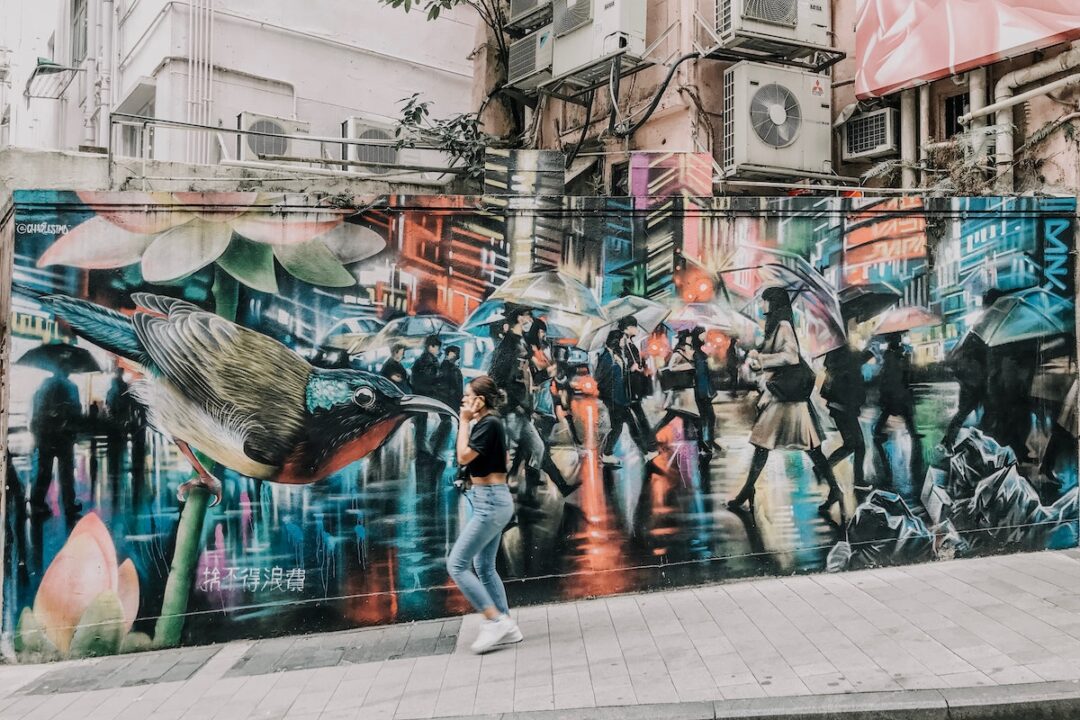Hong Kong’s reputation of being an urban jungle belies the fact that the city regularly hosts art exhibitions at its numerous galleries and studios. But if you want a bit of inspiration while you’re walking to work or strolling through the bylanes of the 852, there are several street art and graffiti spots that adorn the city’s public spaces.
There is seemingly no spot in Hong Kong that hasn’t caught a muralist’s eye — from blank walls, alleyways and stairwells, to lanes, shopfronts and shutters. We bring you our pick of the best spots in the city to find street art.
Graham Street — Central
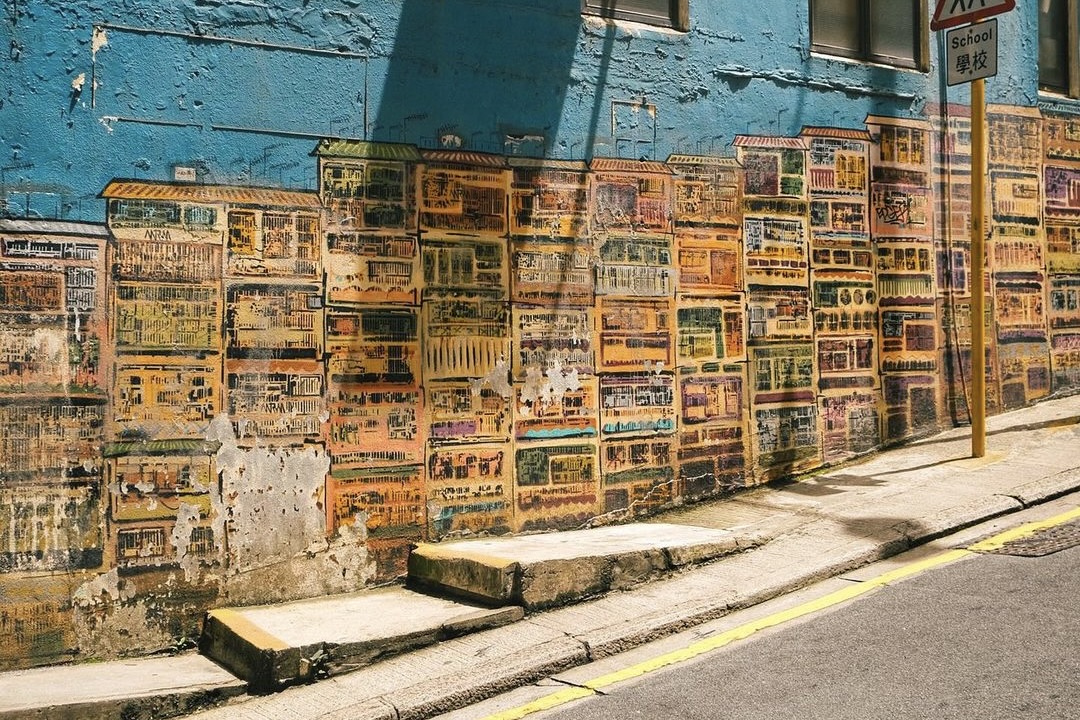
This is the definitive street art Instagram spot in the entire territory. Don’t be fooled by the pictures online that show a pedestrian- and vehicle-free road in front of Alex Croft’s depiction of cheek-by-jowl old-world buildings that line the wall along Graham Street. It’s a bustling thoroughfare, mostly filled with people vying for that perfect shot in front of one of the city’s most iconic murals.
Heung Yip Road — Wong Chuk Hang
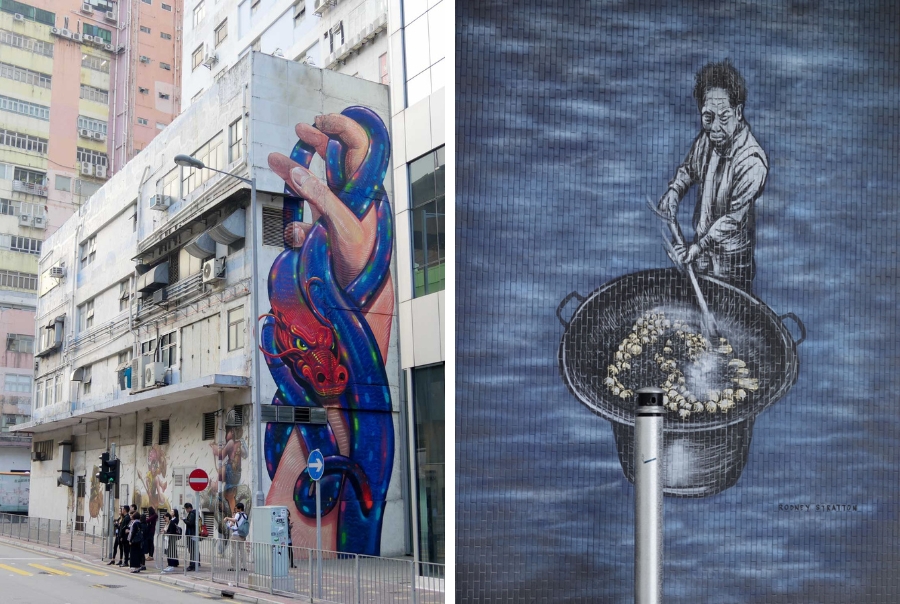
After the MTR’s South Island Line opened in 2016, the industrial neighbourhood of Wong Chuk Hang got an HKWalls makeover the following year when local and international street artists covered its outdoor spaces with striking pieces of art. The most dramatic is the mural of a dragon-serpent entwined around a hand on E Tat Factory Building on Hung Yip Road, which was created by Spok Brillor.
Man Fun Building — Sham Shui Po
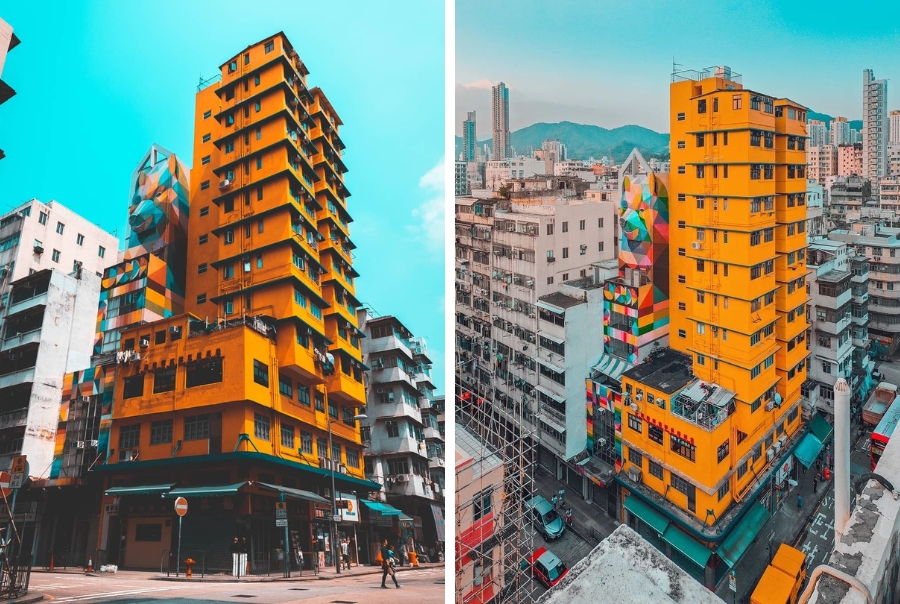
In 2016, Madrid-based street artist Okuda San Miguel used his trademark style to create an image of a fox on an entire residential building on Tai Nan Street called Rainbow Thief during the HKWalls festival. Man Fung Building is often photographed with the adjoining Kam Ning building — which is painted a bright shade of yellow — and the two stand out from the drip mark-stained high-rises of Sham Shui Po. While getting a street-level picture is easiest, some head to the rooftop of a neighbouring building to get a perfect click of both buildings.
The Mills — Tsuen Wan
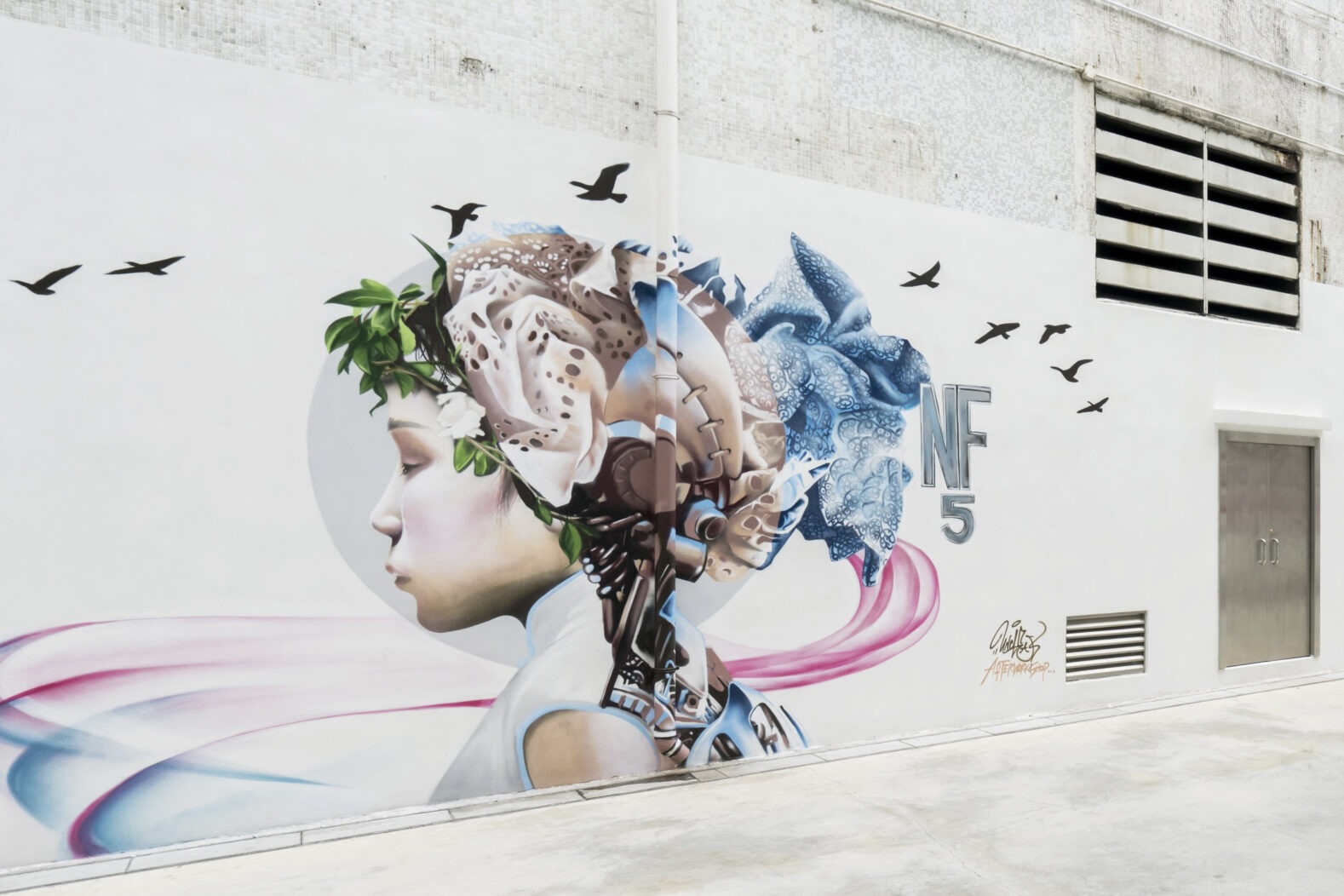
This cultural hub known for its cool cafés and local designer shops was the site of the Nan Fung cotton mills in the 1960s. The six murals that now find a place on Pak Tin Par Lane represent the site’s past, present, and future. The standout image is Karen Pow’s depiction of a female factory worker and the representation of the yarn that the “factory girls” here produced more than half a century ago.
My Secret Garden — Peng Chau
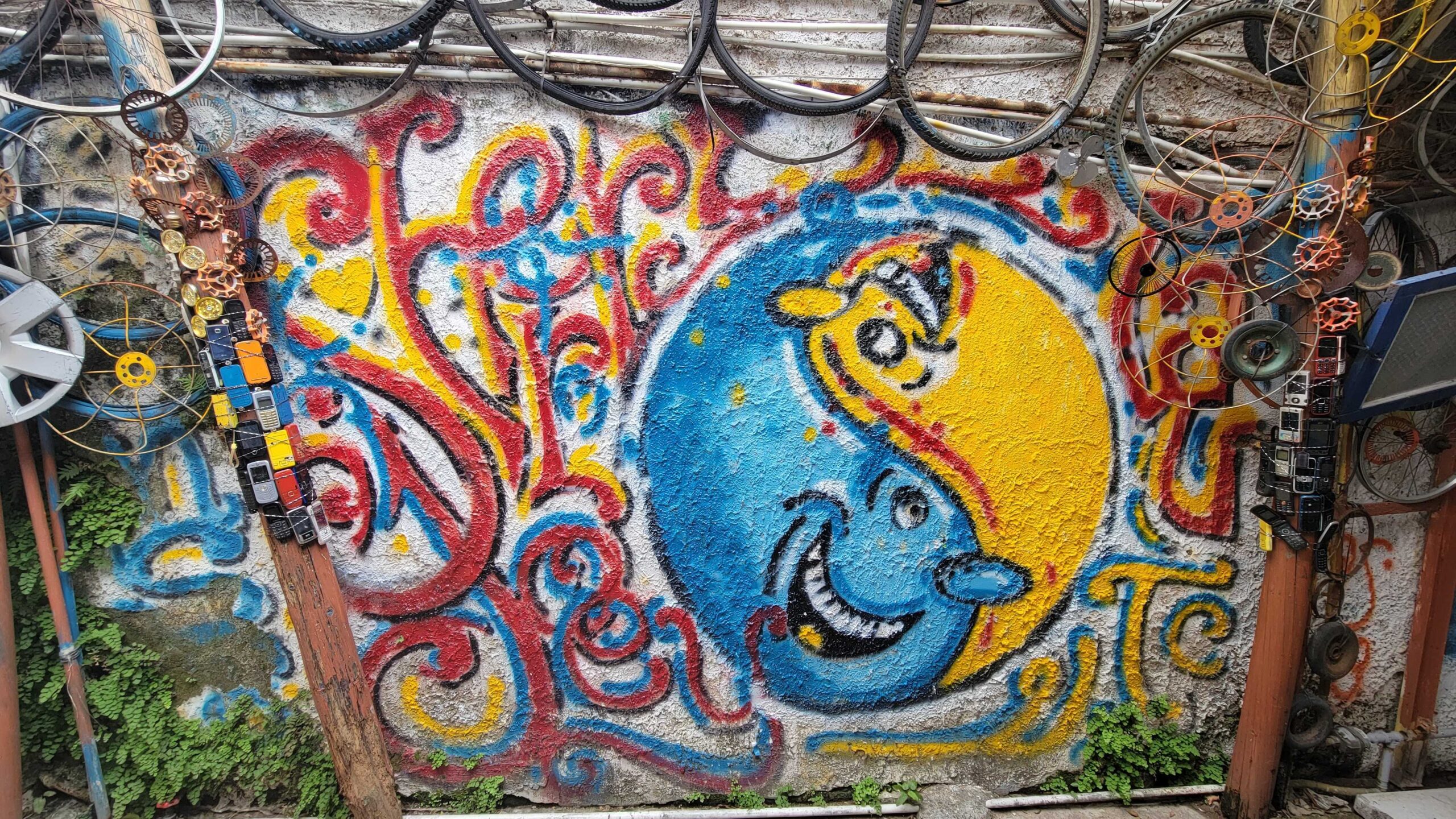
Peng Chau has a thriving art community, so it’s a given that there will be some spots dedicated to street art on this outlying island. Stroll down Wing On Street, the commercial thoroughfare of the village, and you will spot a shuttered store with a mural of a cola bottle top with the words ‘Peng Chau’ emblazoned on it.
Walk through the graffitied alleyway next to this mural, and you’ll come upon My Secret Garden — a display of rotating junkyard installations run by artist Sherry Lau. Amid the bric-a-brac of bicycle wheels, scrap-made robots, old cellphones, and straw hats, you’ll see a medley of street art adorning the walls on two of the island’s the old leather factories.
Art Lane — Sai Ying Pun
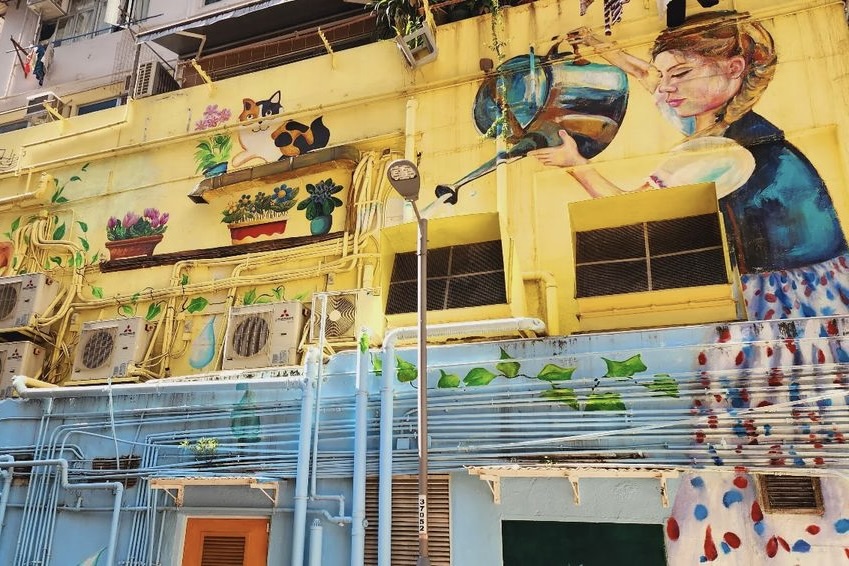
The street art dotted around this hip neighbourhood is the result of an urban revitalisation project for which nine local and international artists reimagined the alleyways and stairwells that criss-cross the area. The most popular spot is near exit B3 of the Sai Ying Pun MTR station, where you will find a huge mural of a young girl watering plants, as well as a rainbow staircase. Saunter through the paths that link Ki Ling Lane, Shek Chan Lane, and Chung Ching Street to find other works of art.
King of Kowloon — Kowloon
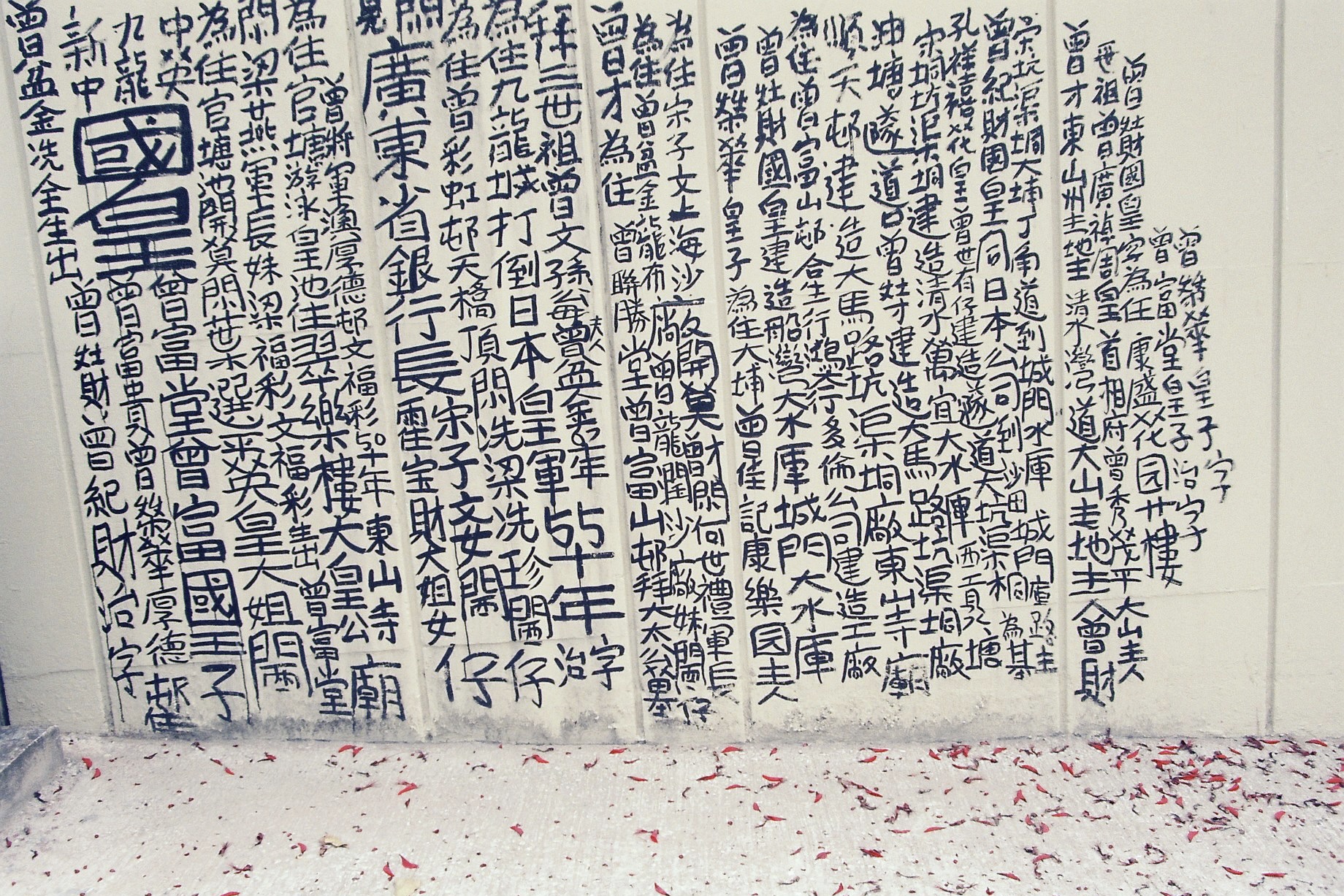
The King of Kowloon, born Tsang Tsou-choi, was famous in colonial times for his calligraphy graffiti. Tsang used his work as a way to express his displeasure at what he considered the unlawful takeover by the British government of his ancestral land — which he said covered most of Kowloon. The contents of his graffiti usually included his name, his self-given title of Emperor or King of Kowloon, his family tree, the names of illustrious emperors, and the exclamation, “Down with the Queen of England!”
His work was famously painted over by authorities, but he would tirelessly recreate it as soon as the paint dried. More recently, there have been efforts to preserve his work, such as his inscriptions on a pillar at the Tsim Sha Shui Star Ferry Pier, which are covered to prevent them from being damaged.
Oi Kwan Road — Wan Chai
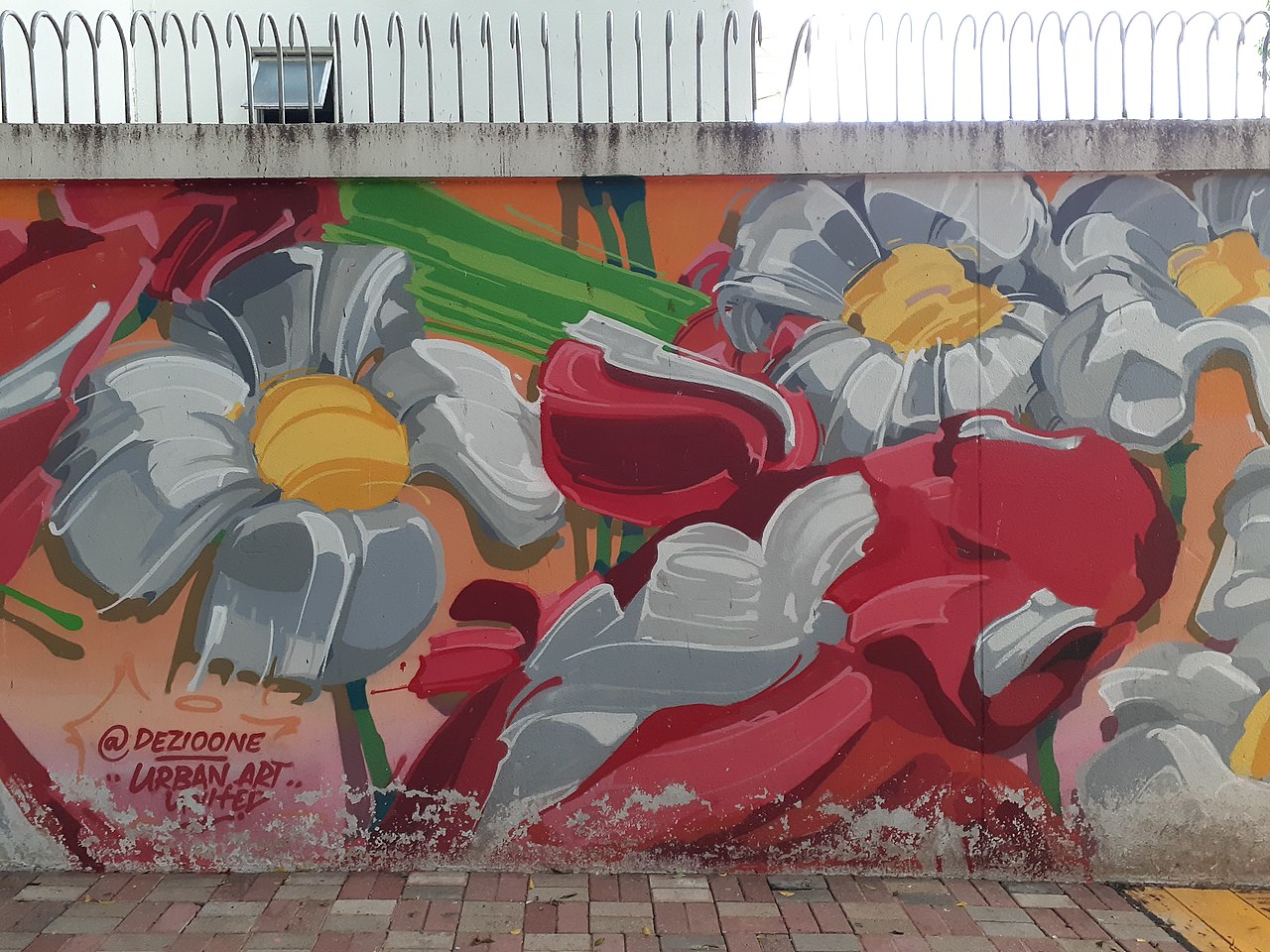
The street art in this neighbourhood is the result of yet another group of international and local artists’ efforts. The most eye-catching is an enormous mural by Montreal street artist Fluke on one of the street-facing walls of the Hong Kong Institute of Vocational Education. It depicts a woman cupping her hands and holding the words “knowledge” (知識) in Chinese. Other standouts include a blue mural of a swimming pool with an interesting pixelated pattern and nature-inspired works on the corners of Tang Shiu Kin Victoria Government Secondary School.
Tank Lane — Sheung Wan
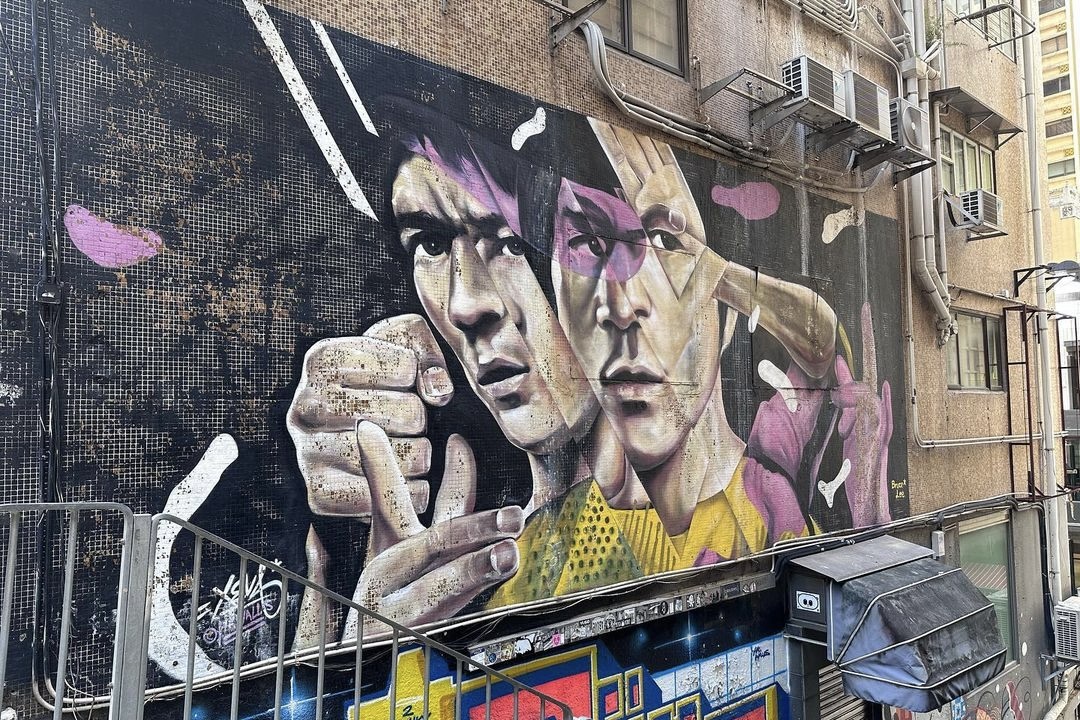
Sheung Wan is dotted with street art on practically every corner, but one of the most famous pieces features a Hong Kong icon: Bruce Lee. This mural of the martial arts legend on Tank Lane was created by South Korean graffiti artist Xeva using his signature mosaic style. Stroll around the area and you’ll come across French urban artist Hopare’s rendering of a mysterious woman casting a hypnotic stare.
If you turn on to Tai Ping Shan Road from here, you’ll come across more artwork such as the wraparound murals on Square Street and the funky-looking bear on Craftissimo.
Hollywood Road — Central
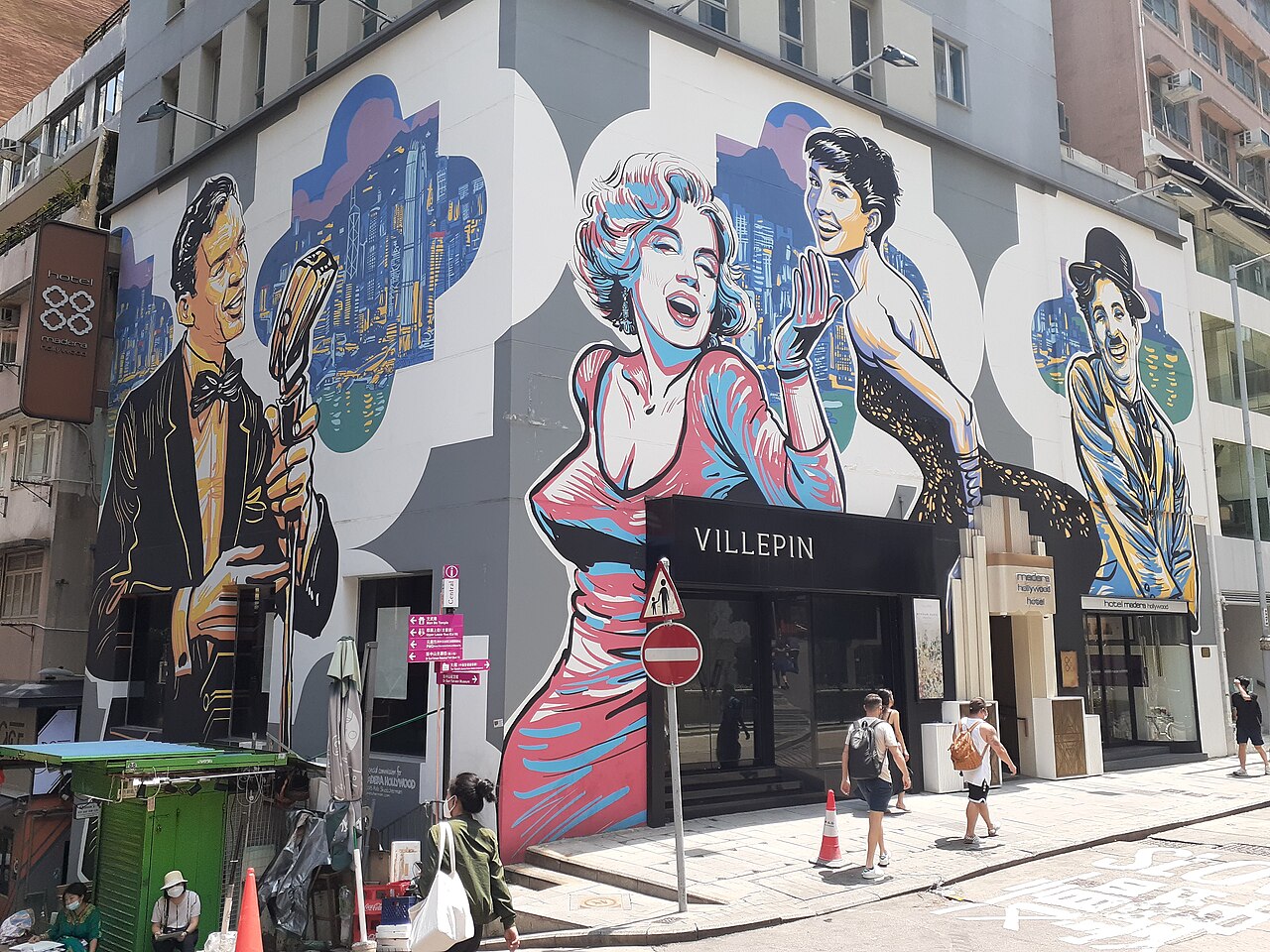
Hollywood Road is known for many things — being the first completed road in Hong Kong, the low-key but pricey antique stores that line the road, and the stone wall trees that dot its path. But it also has some striking street art, most notably the pop art-style mural that adorns the walls of Hotel Madera Hollywood. While the name of the road itself is not inspired by the American film industry, this mural most definitely is, with its imagery of old-time movie stars like Frank Sinatra, Marilyn Monroe, Audrey Hepburn, and Charlie Chaplin.
Harbour City — Tsim Sha Tsui
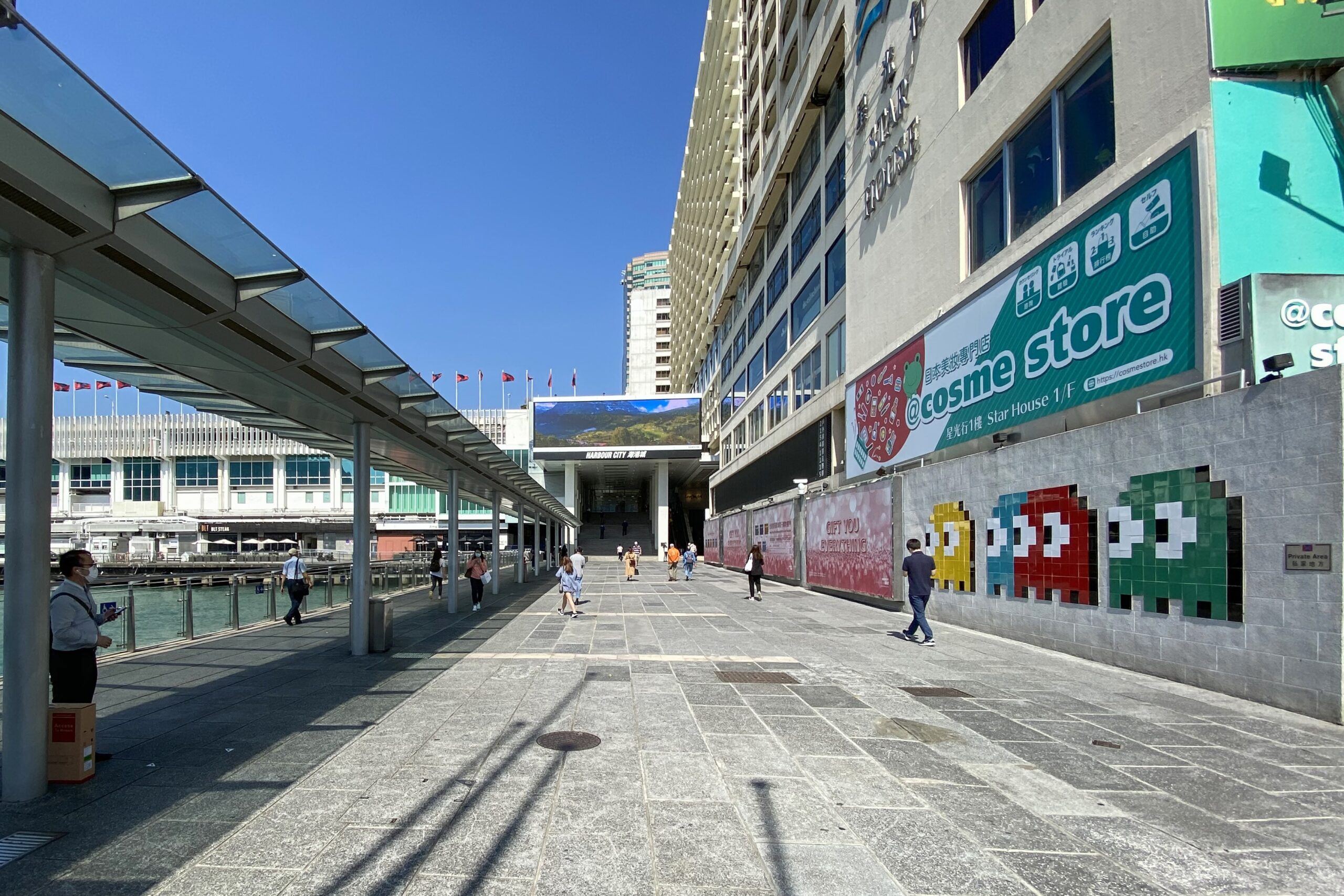
If you happen to spot Pac Man ghosts or Space Invaders during your sojourns in Wan Chai, Tsim, Sha Tsui or Kowloon City, chances are they are signs that street artist Invader was in the neighbourhood. The legendary artist, who keeps his identity a secret, has visited Hong Kong several times and left behind artwork that covers entire walls and is even just a few centimetres wide. If you visit Harbour City in Tsim Sha Shui, you will see signs of Invader’s work all over the mall, most noticeably at the Ocean Terminal Forecourt.
Man Yee Playground — Sai Kung
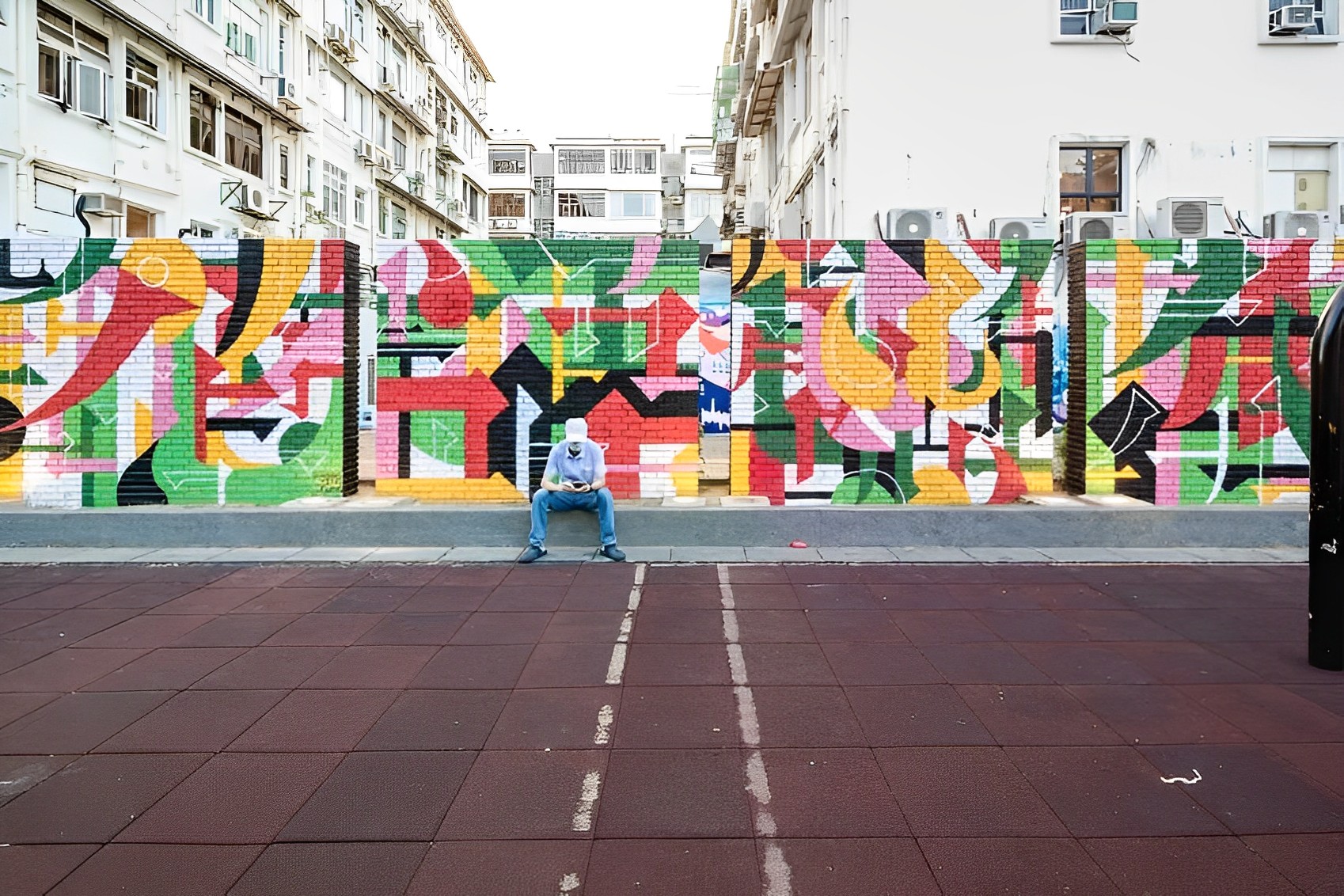
This chilled-out New Territories hotspot has several murals — think Bo Law’s immense whale at Man Nin Wah restaurant or Bao’s goddess and veggie children at the Sai Kung Market. But Hong Kong-based designer, illustrator, and artist Wong Ting Fung’s work here deserves a special mention because of its unique style. His mural in Man Lee Playground is inspired by the Tin Hau Temple in the area and takes the form of abstract Chinese characters in green and red.
Header image credits: Tiffany Ng via Pixels


